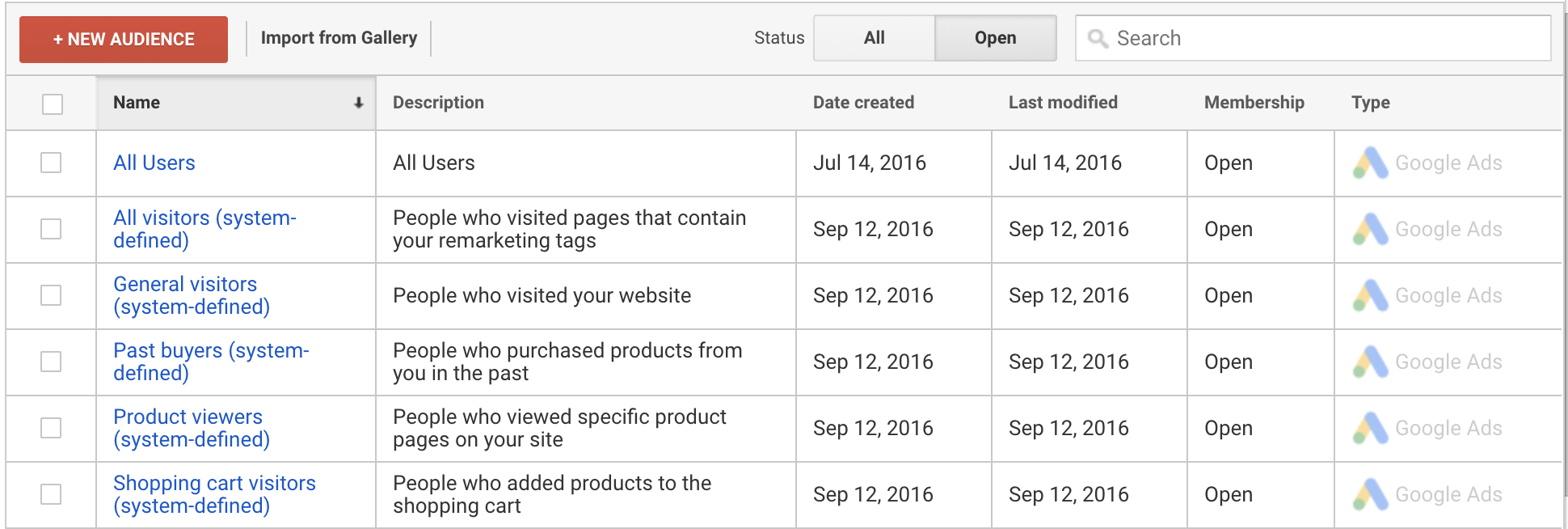Key Functions of Remarketing In Google Analytics Explained
Key Functions of Remarketing In Google Analytics Explained
Blog Article
Optimize Your ROI With Remarketing in Google Analytics
In the realm of digital advertising and marketing, the usage of remarketing methods within Google Analytics has actually verified to be a potent device for enhancing return on investment. By using the power of individual data and customizing ads to certain audience segments, organizations can dramatically enhance their conversion prices. The real vital lies in the art of accuracy - understanding customer actions, crafting engaging advertisements, and continuously refining strategies to drive optimum results. The trip to taking full advantage of ROI via remarketing is a nuanced path led with insights and chances that can reshape the trajectory of your advertising and marketing undertakings.
Understanding Remarketing in Google Analytics
Recognizing remarketing in Google Analytics is important for enhancing your digital marketing method. Remarketing allows you to target individuals who have formerly visited your web site or interacted with your application, presenting them with customized advertisements as they surf various other websites or use other applications within the Google Present Network. This approach assists maintain your brand name top of mind and encourages individuals to go back to your website, eventually increasing the possibility of conversion.
By utilizing Google Analytics, you can track the performance of your remarketing projects, obtaining valuable understandings into individual habits, interaction, and conversions. This data enables you to improve your bidding process, targeting, and messaging techniques to improve the general efficiency of your projects.
In addition, recognizing the various kinds of remarketing checklists readily available in Google Analytics, such as basic, vibrant, and similar target markets, enables you to produce customized and very fractional projects tailored to particular user segments. This degree of granularity can substantially improve the significance and effect of your remarketing efforts, ultimately optimizing your return on financial investment.
Setting Up Remarketing Lists
To effectively apply remarketing projects in Google Analytics, the preliminary action includes setting up and producing remarketing checklists targeting specific customer sections based on their communications with your site or app. By establishing up remarketing listings, you can customize your advertising and marketing efforts to get to individuals that have already revealed rate of interest in your solutions or products.
To start, navigate to the Admin area of your Google Analytics account and choose the Home where you want to produce the remarketing list. Under the Residential or commercial property column, click on 'Target market Definitions' and select 'Audiences.' Next off, click on the red 'New Target market' button and choose 'Create New' to define the specifications for your remarketing checklist.

Crafting Reliable Remarketing Advertisements

When crafting your advertisements, emphasis on creating eye-catching headings and engaging visuals that stand apart to prospective clients. Integrate strong calls-to-action that motivate individuals to revisit your site and finish a wanted activity. Use dynamic remarketing to show customized advertisements including product and services that individuals have formerly checked out on your website.
In addition, make certain that your ads are mobile-friendly since a substantial section of web traffic comes from mobile phones. Test different advertisement variants to recognize which layouts and messages drive the very best results. By continuously refining and optimizing your remarketing advertisements based upon efficiency data, you can his response optimize their efficiency and boost your return on financial investment.
Studying Remarketing Performance

Through Google Analytics, marketing experts can track the performance of their remarketing projects in real-time, enabling them to identify patterns, patterns, and locations for enhancement promptly. By assessing the data, marketing experts can figure out which advertisements are doing well, which audience sections are reacting positively, and which networks are driving the most conversions. This level of granularity makes it possible for marketing professionals to make data-driven choices to enhance their remarketing projects for better outcomes.
Optimizing ROI With Remarketing
Examining remarketing information in Google Analytics enables marketing experts to pinpoint possibilities for maximizing return on investment (ROI) via critical changes - What Is “Remarketing” In Google Analytics?. To optimize ROI with remarketing, it is crucial to understand the actions of Check This Out your target market. By examining user communications, such as the web pages they saw, the products they watched, or the actions they took on your website, you can customize your remarketing projects more effectively
Segmenting your audience based on their habits permits you to develop personalized and targeted ads that are more probable to resonate with them. By showing appropriate ads to specific sections of your audience, you can enhance the possibilities of conversion and eventually boost your ROI.
Furthermore, evaluating different advertisement creatives, messaging, and deals can help identify what resonates best with your audience. A/B screening enables you to explore different aspects of your ads to identify what drives the highest possible involvement and conversion rates.
Conclusion
In final thought, maximizing ROI with remarketing in Google Analytics requires a strategic approach to assessing customer actions, segmenting target markets, producing tailored ads, and maximizing project performance. By leveraging data-driven insights and linked here testing various methods, services can enhance their remarketing initiatives to drive greater interaction and conversion rates. This systematic strategy makes certain that sources are efficiently designated towards taking full advantage of returns on investment in remarketing projects.
Next off, click on the red 'New Audience' switch and choose 'Produce New' to define the criteria for your remarketing listing.
By continuously refining and maximizing your remarketing ads based on efficiency information, you can maximize their performance and enhance your return on financial investment.
By delving into these understandings, marketing professionals can get a comprehensive understanding of exactly how their remarketing initiatives are reverberating with their target audience and driving conversions. To take full advantage of ROI with remarketing, it is essential to recognize the actions of your target market.In conclusion, optimizing ROI with remarketing in Google Analytics requires a calculated approach to assessing individual behavior, segmenting target markets, producing tailored ads, and enhancing project performance.
Report this page